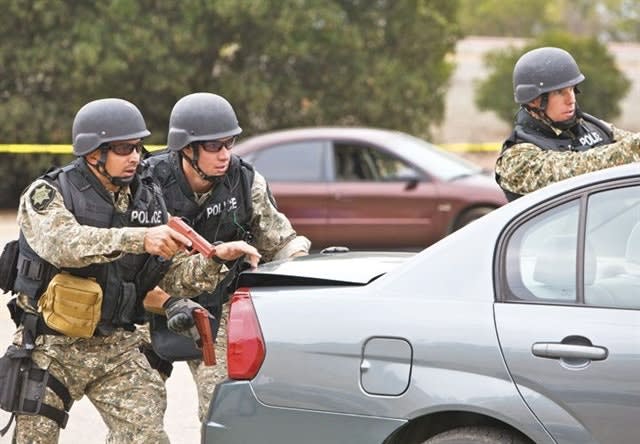Scenario #8, Off-Duty Officer: The off-duty officer is at the school enrolling his child. The active shooter attacks and the officer, who is armed with his pistol, intervenes. He shoots and kills the shooter. The contact team is coming down the hallway when shots are fired. The officer steps out of the room to meet the team. He has a badge hanging around his neck, and it should be clearly visible to the team in good lighting. He has a pistol in his hand that's pointed into the room where the suspect is down. He shouts out that he's a cop and he just shot the shooter.
The goal is to avoid shooting the off-duty cop. Target identification and acquisition are tested. The team approaches the off-duty cop with caution and orders the officer to put down the weapon. The team may need to secure him until things are sorted out. All the time, the team members are paying attention to secondary danger areas. Plus one.
Scenario #9, Rescue Team Transition: The rescue team—with wounded party in tow (walk them by the arms or put them in a chair with rollers to avoid dropping someone) makes its way back to a triage station. The team begins taking fire from a shooter who enters a room up ahead where innocents begin screaming and shots are fired.
Here's the goal. The rescue team must transition to contact-team mode and put down the shooter because the threat in the classroom is immediate. No time to summon another team. After the threat is dealt with, the team must tend to the wounded party.
Scenario #10, Active Shooter with IED: The contact team works down a hallway to a room with one or more shooters and innocents. When the suspect sees the contact team, he will attempt to light (with cigarette lighter) an IED.













